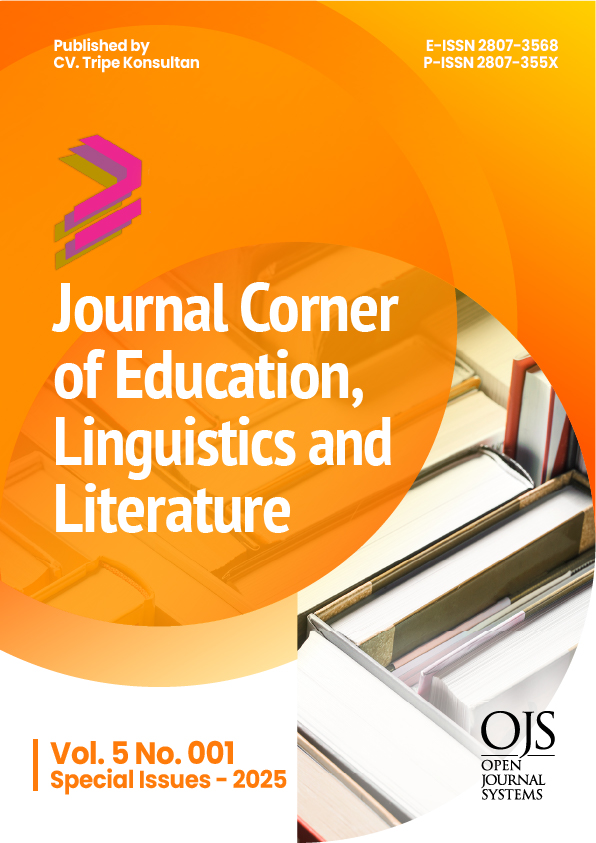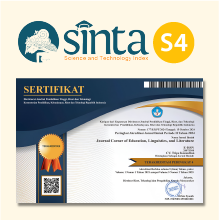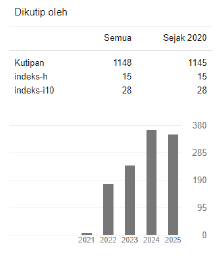A Gender-Based Analysis of Family Business Succession in the Entrepreneurship Study Program, Universitas Pendidikan Indonesia, Tasikmalaya Campus, Class of 2022
 https://doi.org/10.54012/jcell.v5i001.600
https://doi.org/10.54012/jcell.v5i001.600
 Abstract views: 48
Abstract views: 48
 PDF downloads: 194
PDF downloads: 194
Keywords:
Family Business, Succession, Gender Perspective, Entrepreneurship, Study ProgramAbstract
Succession in family business is a strategic process to ensure company sustainability through mature and considerate planning that takes into account family expectations, business interests, and successor readiness. In the past, men played a larger role in leadership, but now women also hold increasingly significant leadership positions. This shift reflects a change in how individual ability is viewed, no longer based solely on gender hierarchy, but on how an ideal and capable successor can bring positive change to the company. The research method used is a qualitative study with a descriptive approach. This research was conducted at the Universitas Pendidikan Indonesia (UPI), with the study object being family business founders and family business successor candidates who are students of the 2022 Entrepreneurship Study Program. The sampling method applied in this research is purposive sampling. The results show that the majority of family businesses have their own planning in selecting a successor by providing formal education and practical experience from an early age. Furthermore, 67% of family business owners do not consider gender as a determining factor in choosing a company successor. For them, mental readiness and commitment to running the business are the main requirements for a family business successor.
Downloads
References
Mahfudiyanto . (2019). ANALYSIS OF LEADERSHIP SUCCESSION IN FAMILY BUSINESSES. Journal of Economic Education ,, 4 (1), 63-65.
Prayogo , GA (2019). FACTORS THAT SHAPED FAMILY BUSINESS. Journal Business Management and Start-Up , 4 (2), 241-242.
Remiasa , M. (2014). ANALYSIS OF FAMILY BUSINESS SUCCESSION PROCESS. 18 (2), 143-144.
Sokolowsky, J. (2024, August 9). Planning Succession : What It Is and Why It Matters . Retrieved from https://chronus-com.translate.goog/blog/why-succession-planning-important?_x_tr_sl=en&_x_tr_tl=id&_x_tr_hl=id&_x_tr_pto=sge#:~:text=Succession%20Planning%20Is%20a%20Process%20in%20Senior%20Leaders%20Leaving%20Companies.
Whehelmina , GMB, & Wahyono, SA (2022). Analysis Succession Management to Female Family Members as well The impact on Company Performance in Business Family of PT Payon Aura Sejahtera. Proceedings of the National Seminar on Community Service Ma Chung (SENAM), 2022, 54 60. Retrieved from https://ocs.machung.ac.id/index.php/seminarnasionalmanajemenakuntans/article/view/310
Guadalupe, M. G., Juan, C., & Alexandre, J. S. (2020). SUCCESSFUL SUCCESSION: THE ROLE OF THE ENVIRONMENT AND THE SUCCESSION PLAN. Journal of Business Administration; Sao Paulo Vol. 61, Iss . 6 Retrieved November 2024 from https://www.proquest.com/docview/2588494389/16B4B8B8C62546B2PQ/5?sourcetype=Scholarly%20Journals
Soelistyawati , Mujanah , S., Ridwan, MS (2024). Succession planning and family business longevity: a study on currency exchange companies. Management and Business,22(2), 296-312. DOI: 10.24123/ jmb.v 23i2.764 Retrieved from https://www.journalmabis.org/mabis/article/download/764/415
Iin, UH, Adif, FS, Dita, S., & Aik , Z. (2020). Understand Succession from Different Viewpoints : “Case Study on Empty House ”. Journal of Biology Education Vol.1 No.2 Retrieved from http://download.garuda.kemdikbud.go.id
Woodward (2022). Elizabeth Barr, Ronna Popkin, Erik Roodzant , Beth Jaworski, Sarah M Temkin, Gender as a social and structural variable: research perspectives from the National Institutes of Health (NIH), Translational Behavioral Medicine, Volume 14, Issue 1, January 2024, Pages 13–22, https://doi.org/10.1093/tbm/ibad014
EY (formerly Ernst & Young) (2015). Women's involvement in Family Firms: Progress and Challenges for Future Research. Nelson , T., & Constantinidis , C. (2017). Sex and Gender in Family Business Succession Research: A Review and Forward Agenda From a Social Construction Perspective. Family Business Review, 30(3), 219-241. https://doi.org/10.1177/0894486517715390
Women in Family Business. (nd). What Women Face in the Family Business: On Gender Bias and More. Retrieved November 23, 2024, from https://womeninfamilybusiness.org/gender-bias-and-more/
McAdam, M., Hytti , U., & Mussolino , D. (2021). Building leadership identities in family firms: Overcoming gender bias. Journal of Family Business Research. Retrieved from https://www.emerald.com/insight/content/doi/10.1108/jabes-01-2021-0014/full/html
Salinas-Quiroz, F., & Sweder, E. (2022). Gender and succession in family business: A cultural perspective. Journal of Family Business Studies. https://doi.org/10.1007/s11301-022-00234-5
Cahyani, PW (2024). Succession Planning in Family Business. Journal of Entrepreneurship Business Management , 66-72.
Sawal Sartono, SM (2020). GENDER ANALYSIS IN FAMILY BUSINESS SUCCESSION. 29-50.
Downloads
Published
How to Cite
Issue
Section
License
Copyright (c) 2025 Sezara Indah Putri, Nadira Dinanti, Hajar Sri Hasanah, Azizah Fauziyah

This work is licensed under a Creative Commons Attribution-ShareAlike 4.0 International License.
All articles published in the Journal Corner of Education, Linguistics, and Literature are licensed under the Creative Commons Attribution-ShareAlike License (CC BY-SA).

















